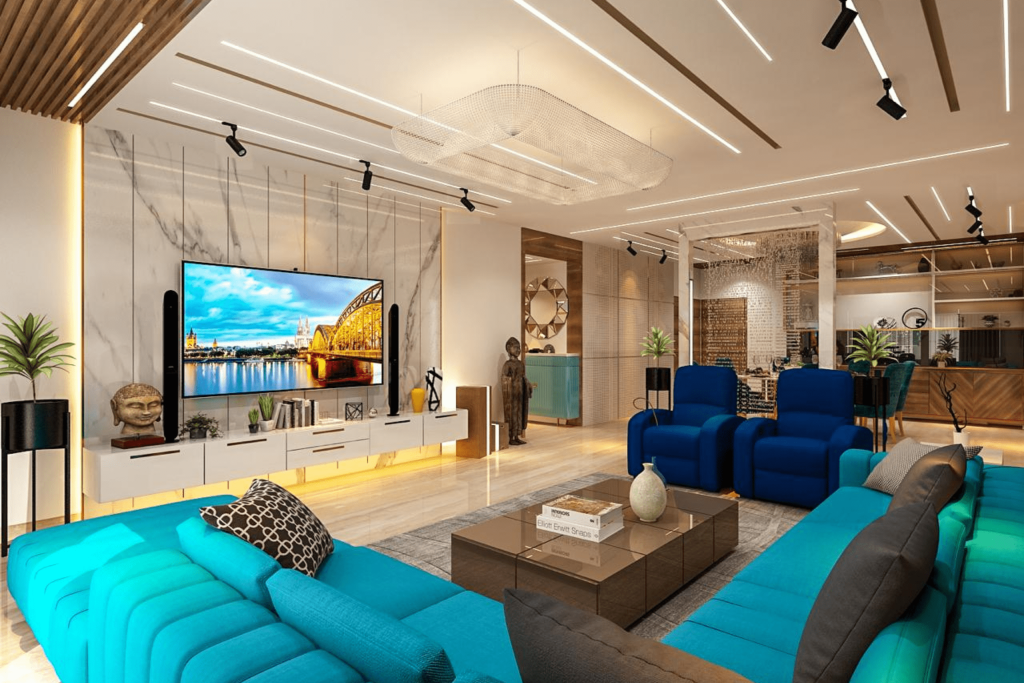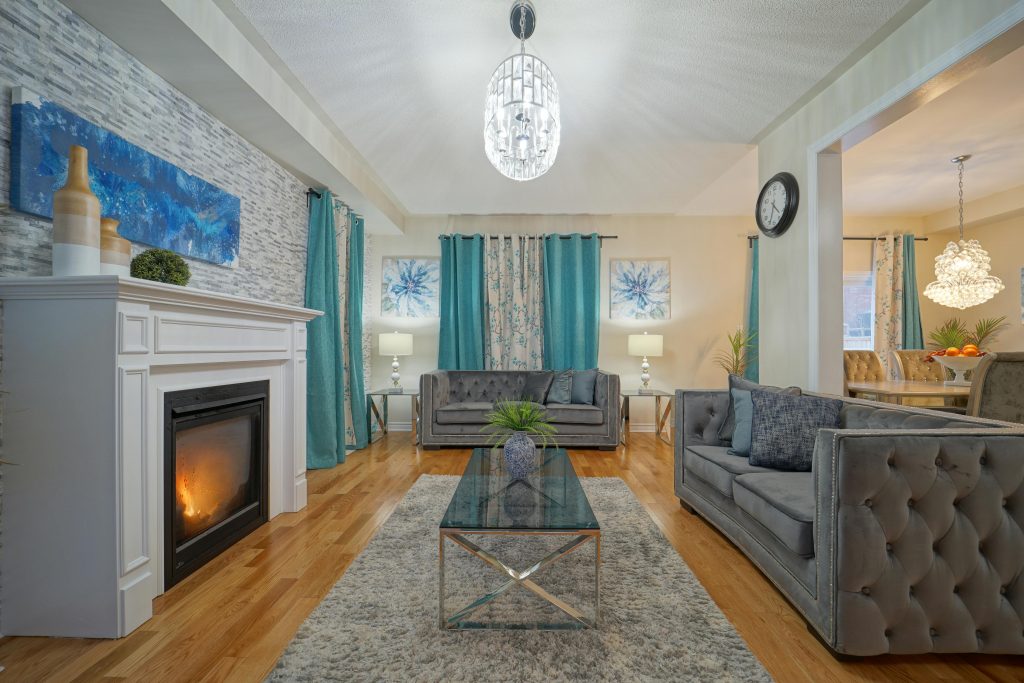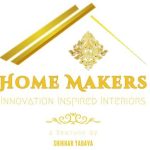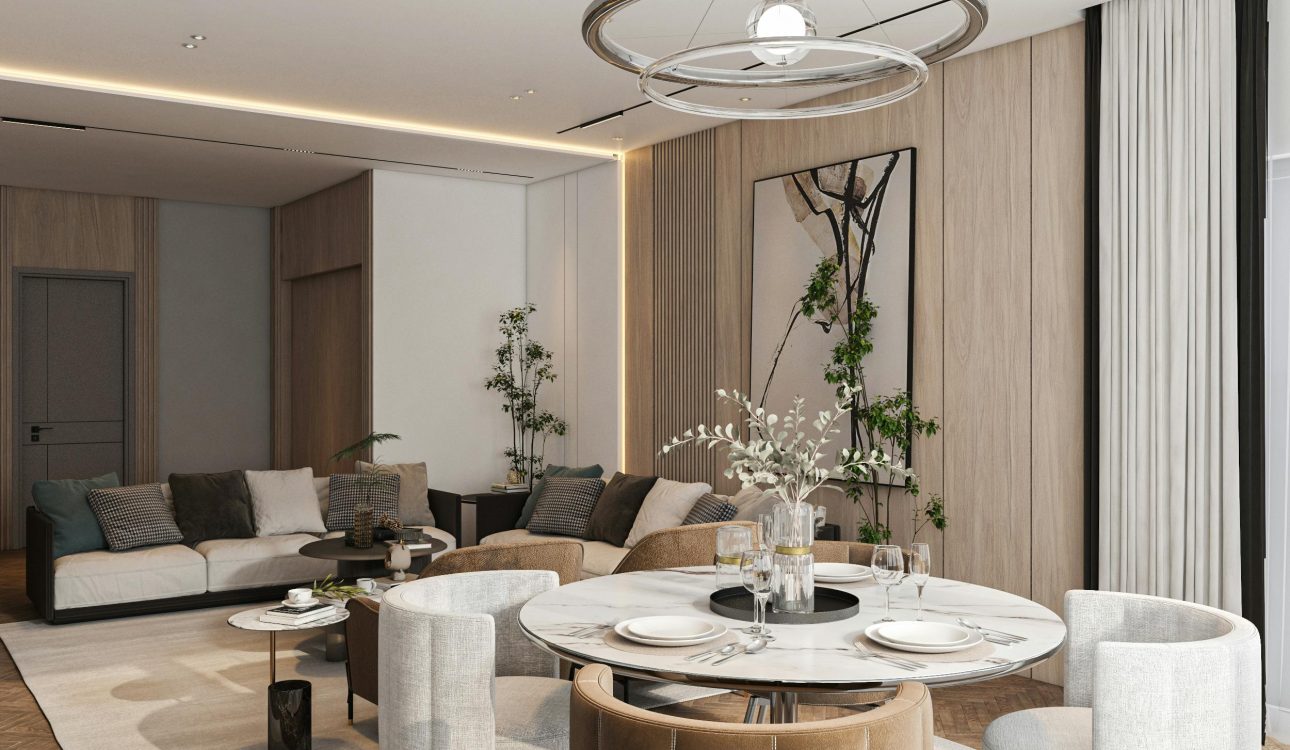Transforming a house into a stunning, fully functional, and deeply personal home is not an accident—it is the result of careful planning, methodical execution, and a vision that ties every space together. At Home Makers Interior, the goal is simple: to take your home from “just walls and a roof” to “a warm, stylish, and perfectly designed sanctuary” that reflects your personality and meets every functional need.
While trends may change, the process of achieving a truly remarkable transformation follows a proven sequence. This guide breaks down that sequence into clear, in-depth, step-by-step points, starting from the first site visit and ending with the handover of a beautifully finished home. Everything here focuses only on residential interiors, with a focus on houses, not commercial spaces—ensuring every detail serves the purpose of comfort, aesthetics, and long-term functionality.
In-House Survey & Space Understanding for Home Makers Interior
A house cannot be transformed without first understanding it in its raw state. The in-house survey sets the foundation for all design work.
Site Walkthrough
- Walk through each room slowly, taking in natural light patterns, ventilation sources, and views from windows.
- Observe how sunlight moves across spaces during the day if possible.
- Identify fixed structural elements that cannot be moved (beams, load-bearing walls, columns).
Measurement & Documentation
- Use a laser measuring tool for accuracy, covering wall-to-wall distances, ceiling heights, and door and window sizes.
- Record positions of electrical outlets, switches, air conditioning ducts, plumbing lines, and gas pipelines.
- Photograph each wall and floor area, labeling them for easy reference later.
Initial Observations
- Note any damp spots, cracks, or uneven flooring—these affect later work.
- Check existing finishes to decide if they should be retained, repaired, or replaced.
- Identify architectural features worth highlighting (arches, niches, bay windows).
Deliverable: A comprehensive site survey report with annotated photos and a rough floor plan sketch.

Client Lifestyle Briefing & Priority Mapping
The home’s design should reflect the lives of the people living in it.
Understanding the Family
- Number of family members and their age groups.
- Specific lifestyle needs: work-from-home, children’s play areas, entertainment zones, and storage needs.
- Special requirements like pet spaces, meditation corners, or home gyms.
Design Preferences
- Gather inspiration images from the client—Pinterest boards, magazine cuttings, or saved Instagram posts.
- Identify preferred design styles: minimalistic, contemporary Indian, modern European, bohemian chic, etc.
- Discuss color preferences and tones they dislike.
Functional Priorities
- Rank the spaces in terms of importance: Is the living room the heart of the home, or is it the kitchen?
- Decide between open-plan or closed spaces based on lifestyle.
- Highlight areas that need maximum storage vs. maximum openness.
Deliverable: A signed-off client brief document outlining lifestyle needs, functional priorities, and style direction.
Concept Development & Moodboard Creation
Concepts bridge the gap between ideas and actual designs.
Dual Concept Approach
- Present two different but relevant design concepts for comparison.
- One could be closer to the client’s safe preference, and the other could be a more adventurous option.
Mood boards
- Include high-quality reference images for furniture, flooring, wall finishes, lighting, and décor.
- Add small material samples like fabrics, wood veneers, and paint swatches to make the concept tactile.
Storytelling
- Each mood board should tell a visual story about how the house will feel—airy and modern, rich and traditional, or vibrant and eclectic.
Deliverable: A visual presentation containing mood boards, concept statements, and one sample 3D render per concept.
Detailed Space Planning
Space planning ensures the design is functional, not just beautiful.
Room-by-Room Layouts
- Living Room: Decide TV wall placement, sofa orientation, and clear circulation paths.
- Dining: Ensure easy access from the kitchen, comfortable seating clearance, and good lighting.
- Bedrooms: Allocate space for wardrobes without blocking windows or movement.
- Bathrooms: Optimize for storage, functionality, and easy cleaning.
Flow Between Spaces
- Ensure that furniture placement does not obstruct pathways.
- Visual flow: color continuity, flooring transitions, and ceiling designs that guide movement.
Storage Planning
- Maximize underutilized spaces—under-stair storage, bed bases, and tall overhead cabinets.
- Built-in wardrobes for uniformity and space efficiency.
Deliverable: Finalized floor plans and furniture layouts with scale measurements.
Materials & Finishes Selection
Materials define the quality, durability, and look of your interiors.
Flooring
- Choose between marble, tiles, hardwood, or vinyl based on budget, usage, and maintenance preference.
- Use anti-skid flooring for bathrooms and balconies.
Walls
- Select paint shades with washable finishes for high-traffic areas.
- Use accent walls for visual drama—wallpapers, textured paint, or wooden cladding.
Cabinetry & Surfaces
- Opt for moisture-resistant plywood for kitchens and bathrooms.
- Decide on finishes—laminate, veneer, acrylic, or lacquer—based on usage and style.
Deliverable: A materials board with actual samples for client approval.
Lighting Plan
Lighting affects mood, functionality, and design impact.
Layered Lighting
- Ambient lighting: general illumination via ceiling lights, chandeliers, or track systems.
- Task lighting: focused lights for work areas like the kitchen, study, or dressing area.
- Accent lighting: spotlights for artwork, backlit panels, or niche lighting.
Energy Efficiency
- Use LED lights for lower energy consumption and longer lifespan.
- Install dimmers for living and bedroom areas to create mood settings.
Deliverable: Lighting plan with fixture specifications, switch placements, and circuit diagrams.

Kitchen & Bathroom Detailing
Kitchen
- Decide between straight-line, L-shaped, U-shaped, or island kitchens based on space.
- Allocate zones for cooking, prep, storage, and washing.
- Select durable countertop materials like quartz or granite.
Bathrooms
- Use space-efficient fittings like wall-mounted vanities.
- Ensure proper waterproofing and drainage slopes.
- Install adequate ventilation with exhaust fans.
Deliverable: Detailed cabinet drawings, plumbing plans, and tiling layouts.
Carpentry & Custom Furniture
Custom carpentry ensures the home is tailored exactly to the client’s needs.
Wardrobes
- Plan internal compartments for hanging and folded clothes and accessories.
- Use soft-close hardware for a premium touch.
TV Units & Consoles
- Hide cables with concealed wiring.
- Include display shelves or closed cabinets based on preference.
Deliverable: Shop drawings with dimensions, materials, and finishes.
Doors, Windows & Curtains
Doors
- Select designs that complement wall finishes.
- Use high-quality hinges and locks for durability.
Curtains & Blinds
- Sheer curtains for daylight, blackout drapes for privacy.
- Roller blinds for a minimal look in kitchens or bathrooms.
Deliverable: Window treatment schedule with fabric samples.
Colour Combination & Textile Coordination
Colors and fabrics pull the design together.
Colour Palette
- Base colors for walls and floors, accent shades for furnishings.
- Keep a consistent palette across spaces for flow.
Fabrics
- Stain-resistant materials for high-use areas.
- Soft, textured fabrics for comfort zones like bedrooms.
Deliverable: Fabric board with swatches and references.
Décor & Styling
The final touches make the home personal.
Art & Accessories
- Select pieces that reflect the family’s personality.
- Use plants for freshness and warmth.
Styling
- Layer cushions, rugs, and throws for a cozy look.
- Curate coffee table and bookshelf displays.
Deliverable: Styling plan with a shopping list.
Project Execution & Management
Phased Execution
- Start with civil work, followed by electrical, plumbing, flooring, carpentry, painting, and final styling.
Quality Control
- Weekly site visits and milestone checks.
- Snag lists before final handover.
Deliverable: Project calendar and progress reports.

Handover & Maintenance
Final Walkthrough
- Ensure all fixtures, furniture, and finishes are in place.
- Test all electrical and plumbing fittings.
Maintenance Guide
- Provide cleaning tips for each material.
- Offer a post-installation service check at 30, 60, and 90 days.
Deliverable: Handover kit with warranties, manuals, and spare materials.
Conclusion
A stunning home transformation is the result of a disciplined process, attention to detail, and a deep understanding of the client’s lifestyle. With a step-by-step method—from the first survey to the final styling—every corner of the house can be shaped into a perfect blend of beauty, function, and comfort. Home Makers Interior’s approach ensures that each project is not just visually appealing but also livable, durable, and timeless.

